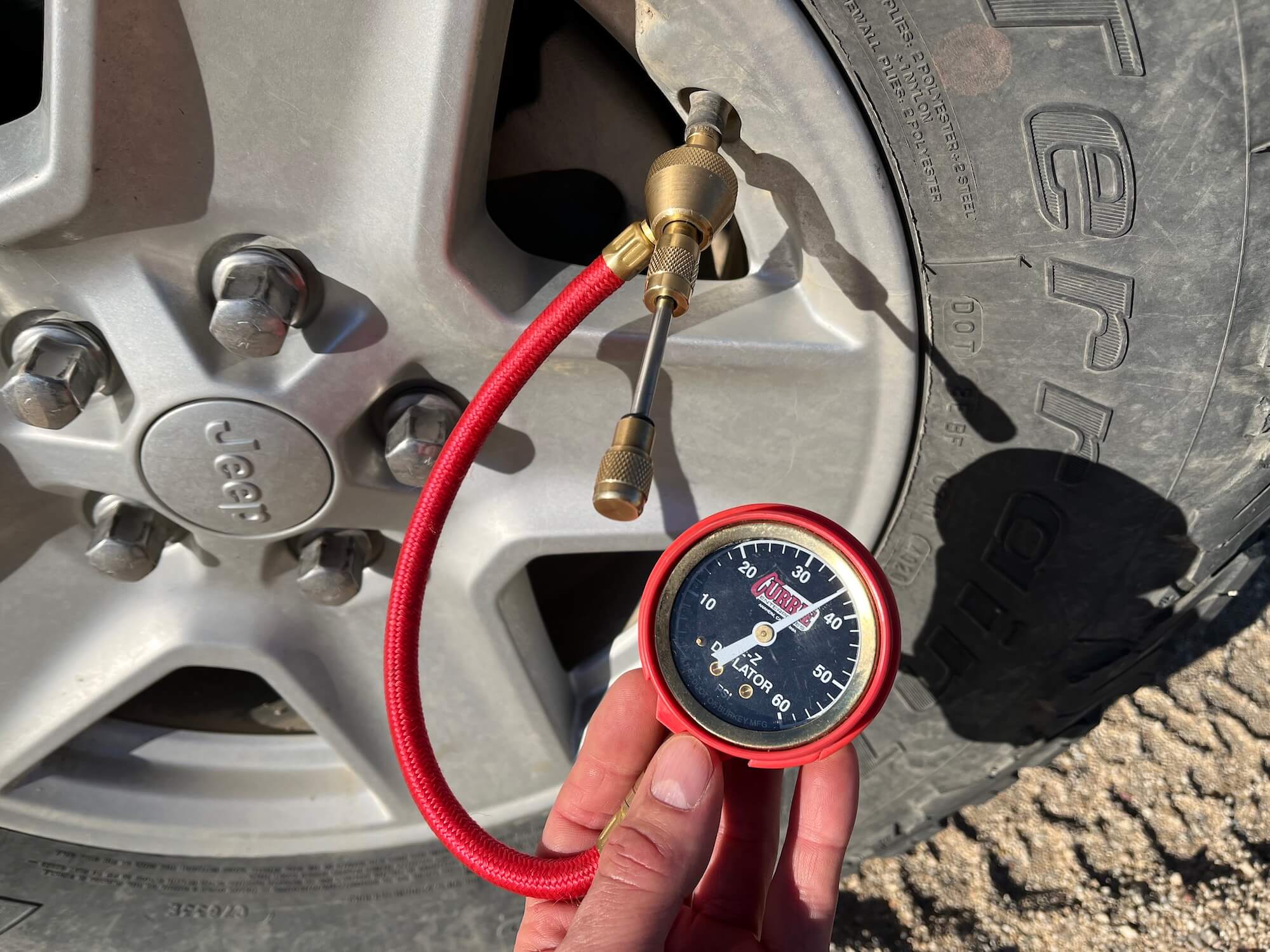
Best Tire Pressure For Your 4×4 On-Road and Off-Road
Photos: John Cappa
The easiest, least expensive and most effective modification you can make to any 4×4 to improve off-road performance is to air down the tires. Airing down the tires of your 4×4 increases traction and flotation, reduces ride harshness and can help minimize drivetrain stress. Of course the proper street pressure is important too. Regardless of if you’ve added larger aftermarket tires to your 4×4 for street use or if you’re looking to air down off-road we got you covered. Of course the proper tire pressure for your 4×4 will depend on tire construction and size, vehicle weight, vehicle speed and the terrain you are driving on. Read on to learn the proper tire pressure for every situation.
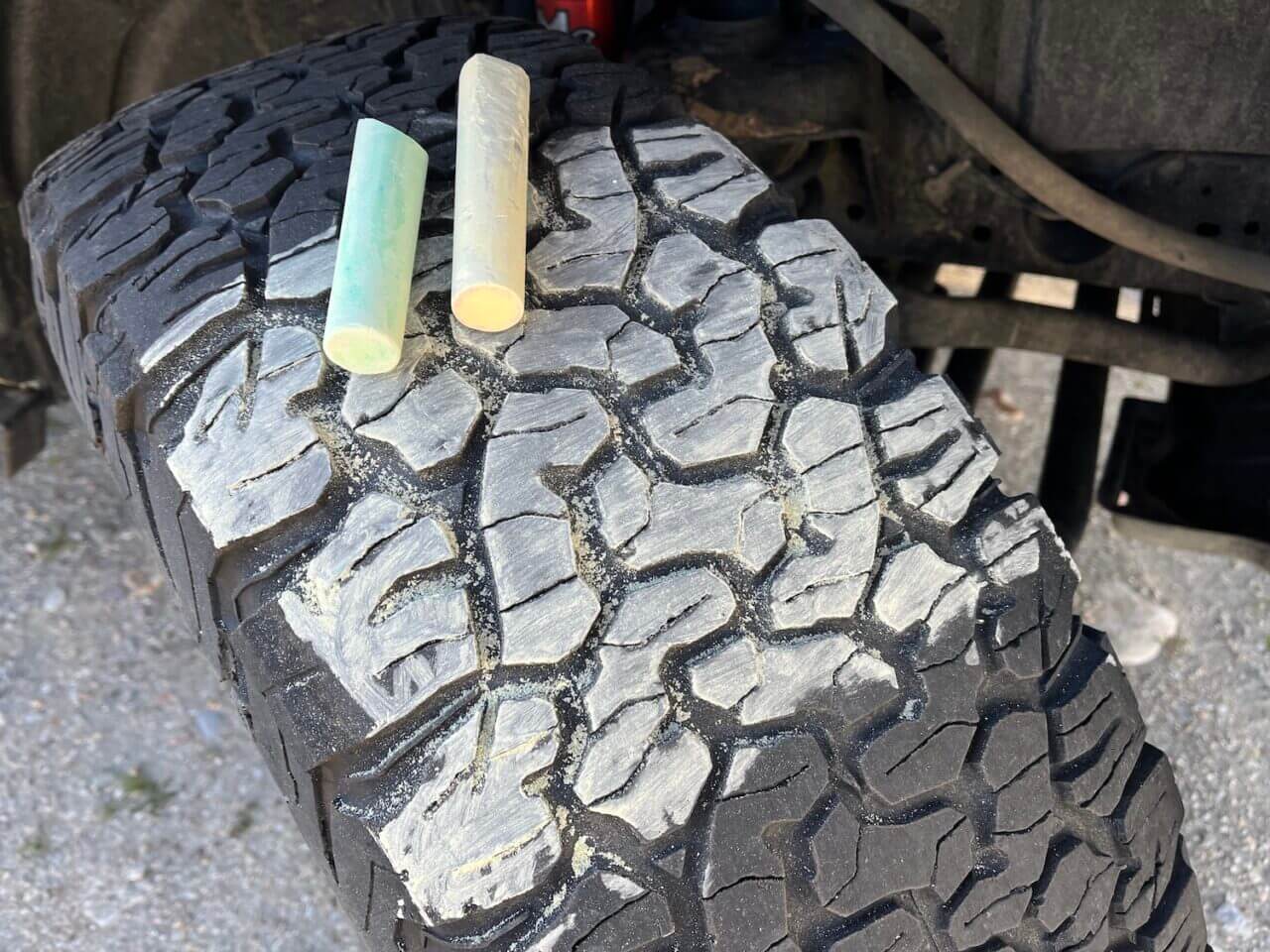
Steal the most colorful sidewalk chalk you can find from the neighbor kids. Lay down a wide chalk line across the entire tread area before driving your 4×4 100-200 feet on a smooth paved surface. This will help you identify what street pressure you should be running.
Proper Street Tire Pressure For Your 4×4
Nearly all old and new 4x4s have door stickers that indicate the proper street pressure for the stock sized tires. Finding the proper street pressure for larger aftermarket tires will require some simple homework. Aftermarket tires often feature increased load rating and weight capacity over the stock tires. In most cases your new tires may support more weight and handle more tire pressure than the outgoing tires. The original recommended tire pressures will not apply to the larger aftermarket tires. To figure out the proper tire pressure you should start by finding a smooth flat surface, such as a parking lot. Inflate your aftermarket tires to the maximum tire pressure imprinted on the tire sidewalls and draw an extra wide chalk line across the tread of each tire. Slowly pull the vehicle forward in a straight line 100-200 feet. Inspect the chalk lines to see where the chalk is worn away. If the chalk line is missing from the center of the tread, reduce the air pressure, redraw the chalk line and repeat the test. If you let too much air pressure out of the tires you’ll see the chalk only wear away on the outer edges of the tire tread. If this happens, increase the air pressure and repeat the test. Continue adjusting the tire air pressure in all of the tires until the chalk line on each tire looks worn evenly across the entire tread surface. You’ll typically need a different tire pressure for the front tires than you do for the rear tires. Also, if you regularly haul heavy loads or a trailer, your tire pressure should be adjusted according to the load you plan to haul.
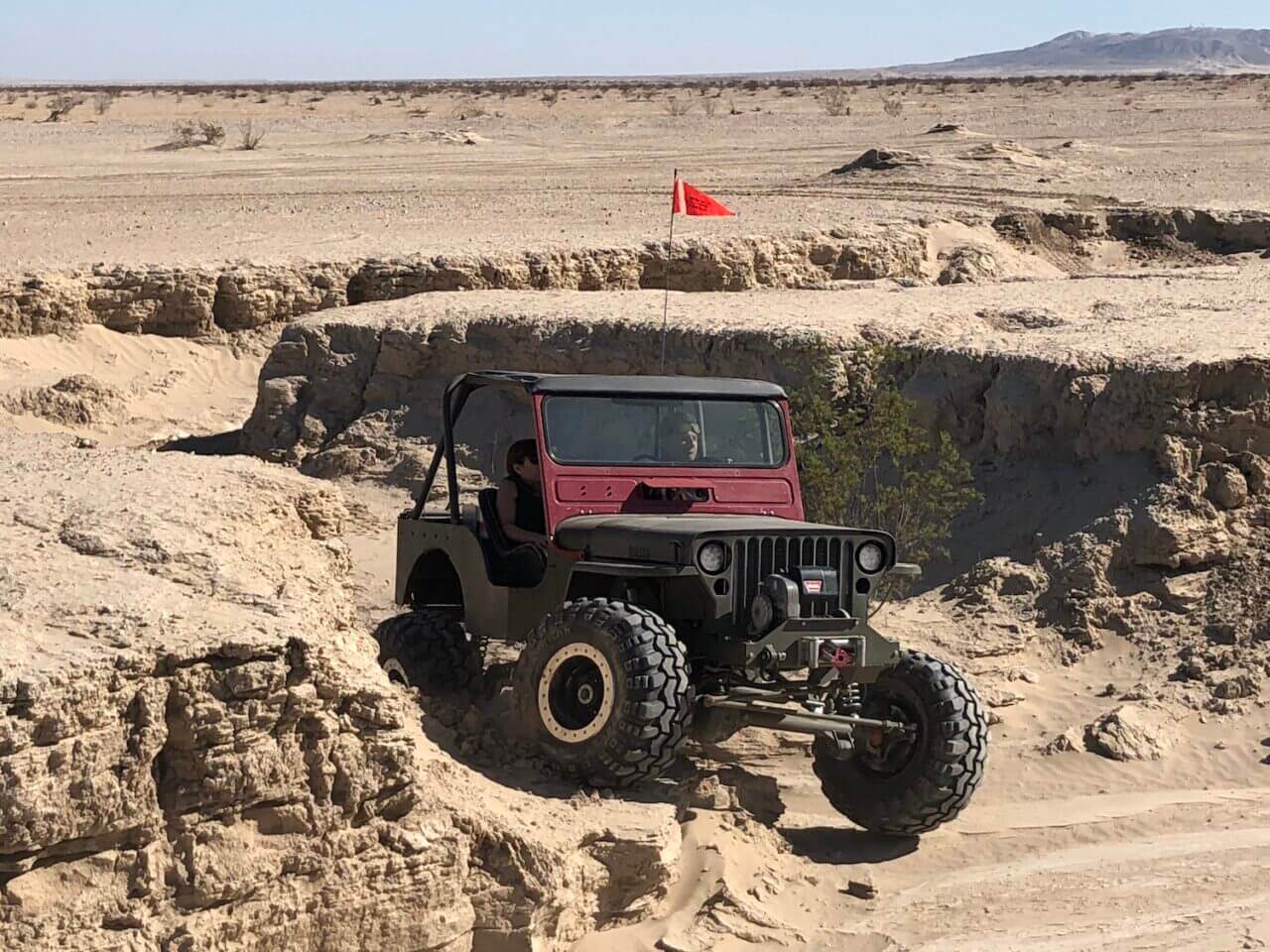
Bias-ply tires like those in the Super Swamper mud tire line up feature nearly indestructible sidewalls, which are extremely desirable off-road. However, you typically have to run the tire pressures well into the single digits to get the tire carcasses to properly flex and grip the off-road terrain. Ultimate bias-ply tire performance off-road generally requires beadlock wheels to keep the tires from unseating.
How Tire Construction Affects Required Tire Air Pressure
Many larger diameter aftermarket tires have higher load ratings than the factory sized tires you replaced. These tires feature a stiffer carcass and require less tire pressure to support the same weight as a lighter duty factory tire. Typical load range ratings for tires include C, D and E. The E range tires are much more robust than the C range tires. Also, radial tires are more compliant than their bias-ply counterparts. Bias-ply tires typically feature incredibly stiff and puncture resistant sidewalls. You’ll find that a bias-ply tire usually needs less air pressure to keep the tread in full contact with the road. Off-road, some bias-ply tires may need to be aired down to the single digits before optimal traction is achieved. Beadlock style wheels will become near mandatory in these applications.
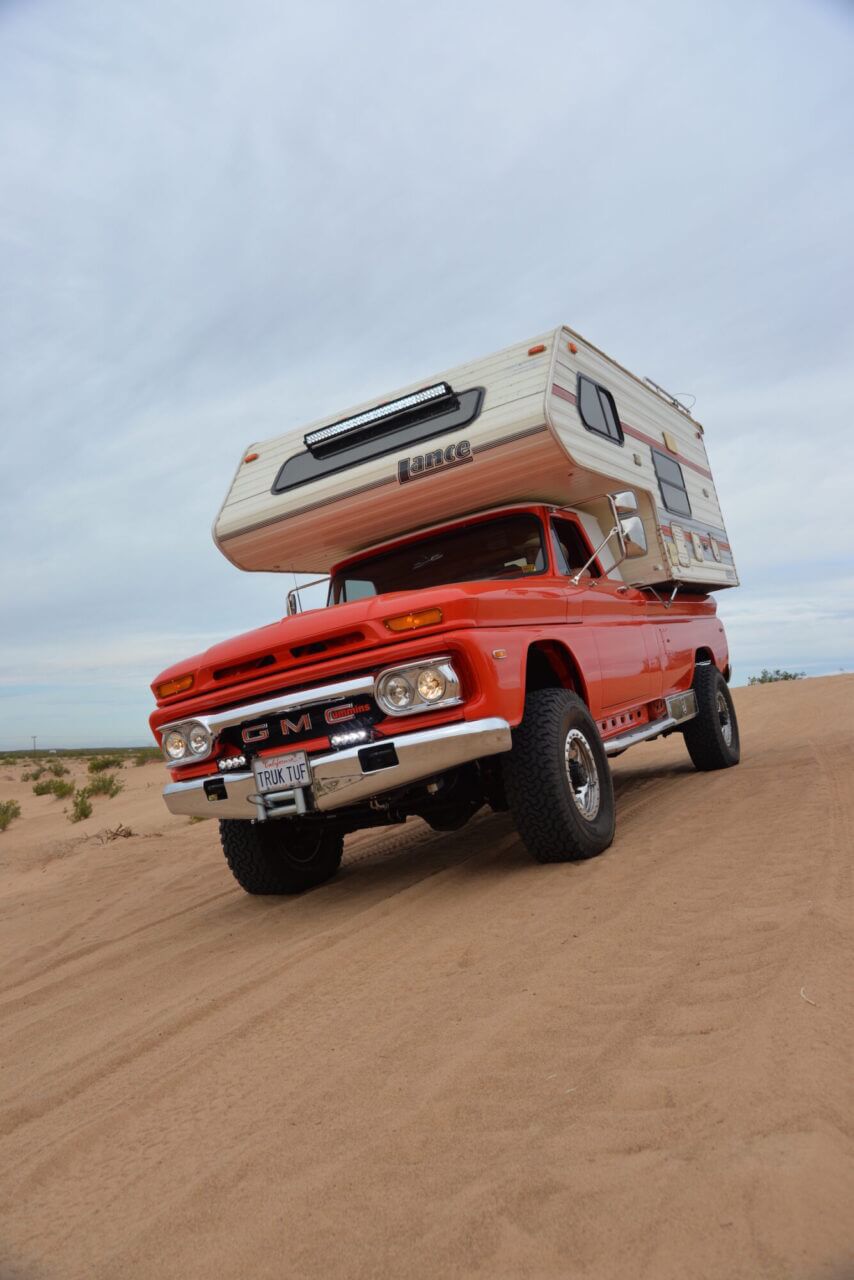
Heavy 4x4s will typically need more tire pressure off-road than lighter vehicles. The extra pressure is required to support the additional weight and keep the wheels from being damaged.
How Vehicle Weight Affects Required Tire Air Pressure
Heavier vehicles will require more tire air pressure than lighter vehicles given the same tire size and construction. The extra air pressure supports the weight of the vehicle. A tire pressure that feels crisp and nimble on the road in a small 4×4 will feel squishy and squirmy on-road in a heavier 3/4- or 1-ton truck. The same is true off-road. You’ll need to match the tire pressure to the terrain and speed of your heavy 4×4. In most cases a typical heavy 4×4 on 35-inch or larger radial tires will be happy at around 20-25 psi for general off-roading. Lighter 4x4s like Jeeps might go as low as 10-15 psi on the same 35-inch and larger radial tires or possibly lower if you run beadlock wheels.
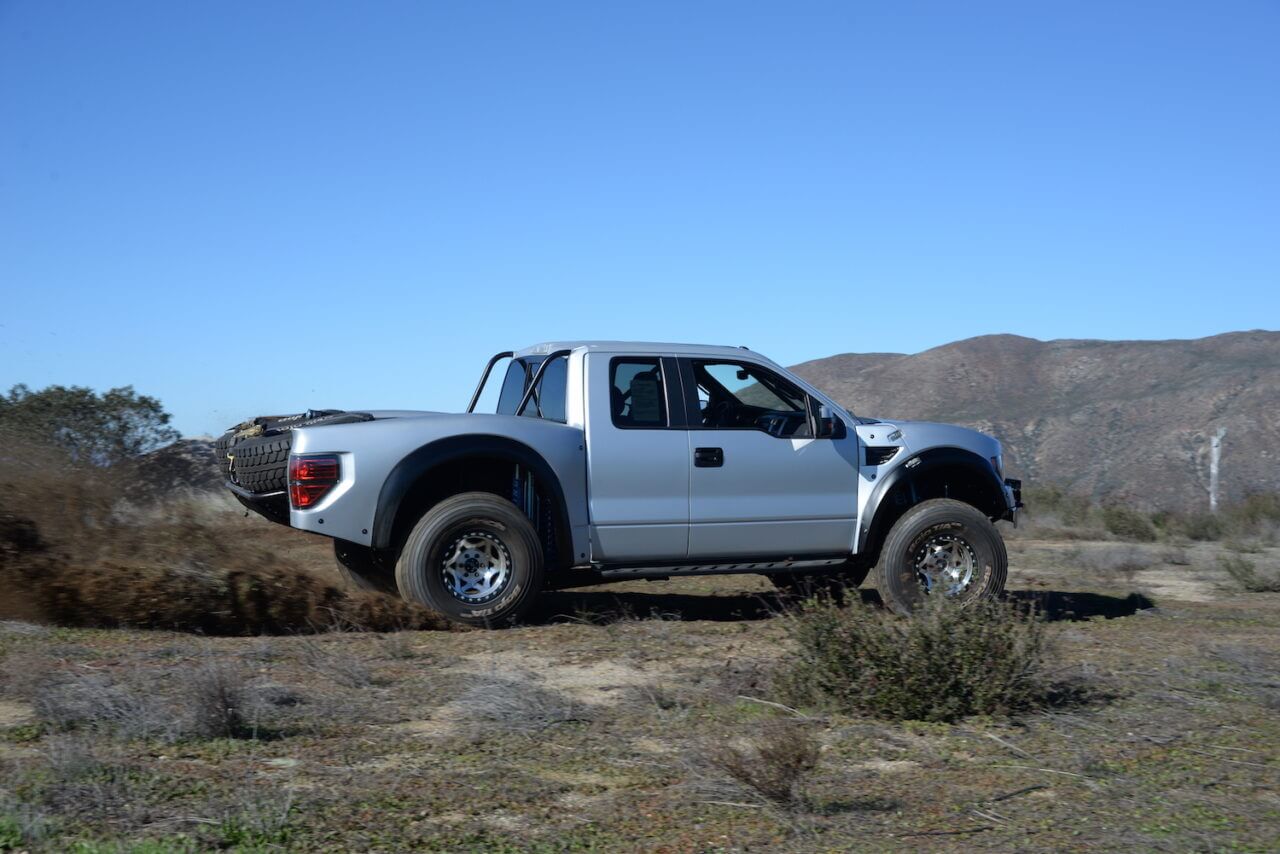
Higher speeds off-road will dictate more tire air pressure to not only keep the tires on the wheels during aggressive cornering, but to protect the wheels from errant rocks that litter the trail. In extreme applications where off-road vehicle speeds nearly reach triple digits you might simply run street pressure to avoid flats.
How Vehicle Speed Affects Required Tire Air Pressure Off-Road
Most enthusiasts keep off-road speeds relatively low, however those that travel the desert two-tracks of the southwest can easily tickle near triple digit speeds sometimes. The more speed you carry, the more tire pressure you want in the tires. This is done to keep the tires on the wheel bead during aggressive cornering and to protect the tire carcass and wheels from damage that could be caused by an errant rock or washout. You’ll have to read the terrain and be honest about your driving skill when selecting a tire pressure for higher speeds off-road. If there are a lot of large, sharp unavoidable rocks strewn about the trail, keep the radial tire pressures 5-10 psi higher than normal off-road pressures. If the rocks are smaller, less frequent and roundish you can generally stick with normal off-road radial tire pressures of 15-20 psi on most 4x4s.
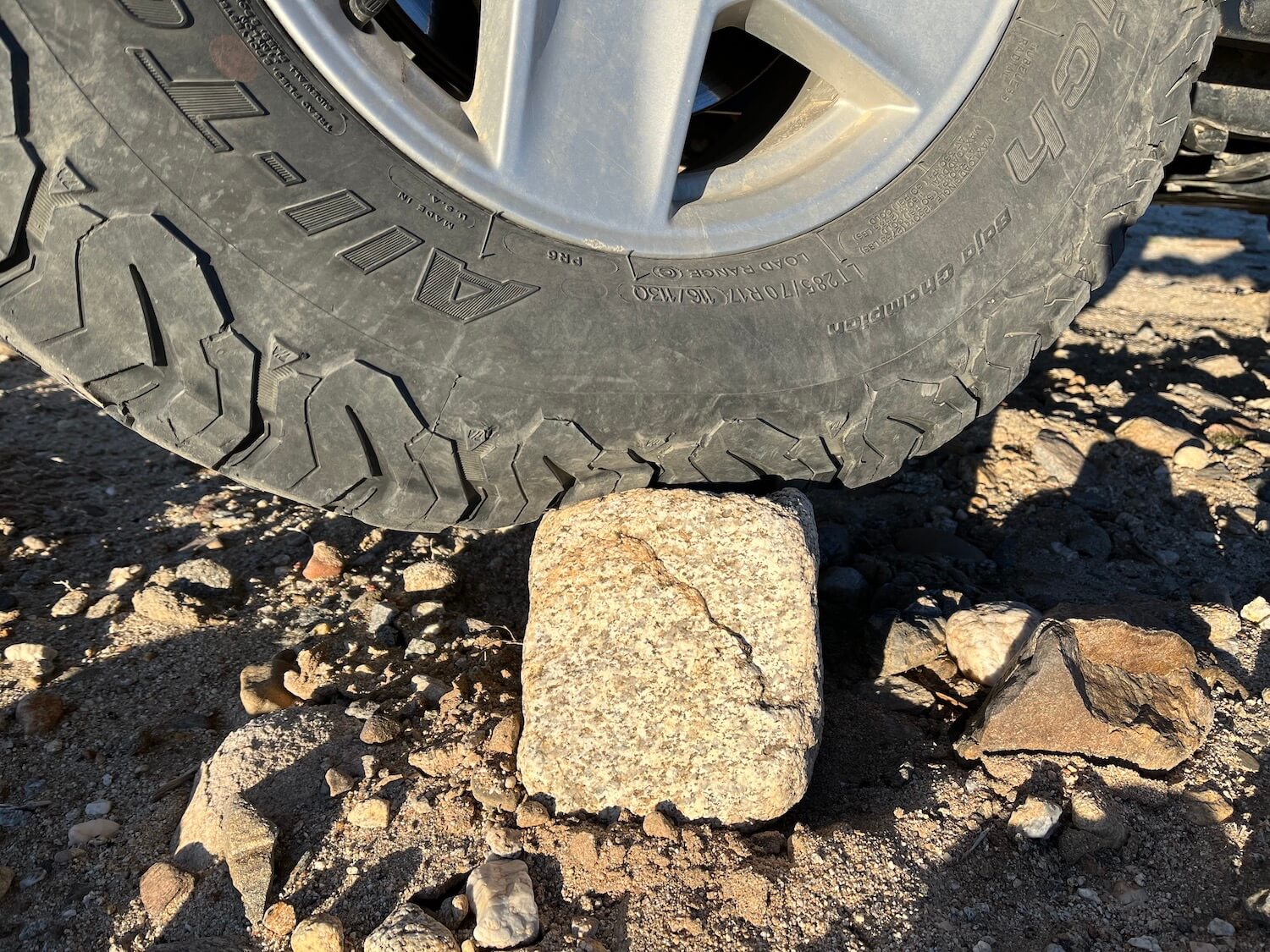
Our application requires 36 psi of tire pressure on the street. As you can see the tire carcass is not very compliant off-road at this pressure. Our tires provide very little flotation and traction at 36 psi.
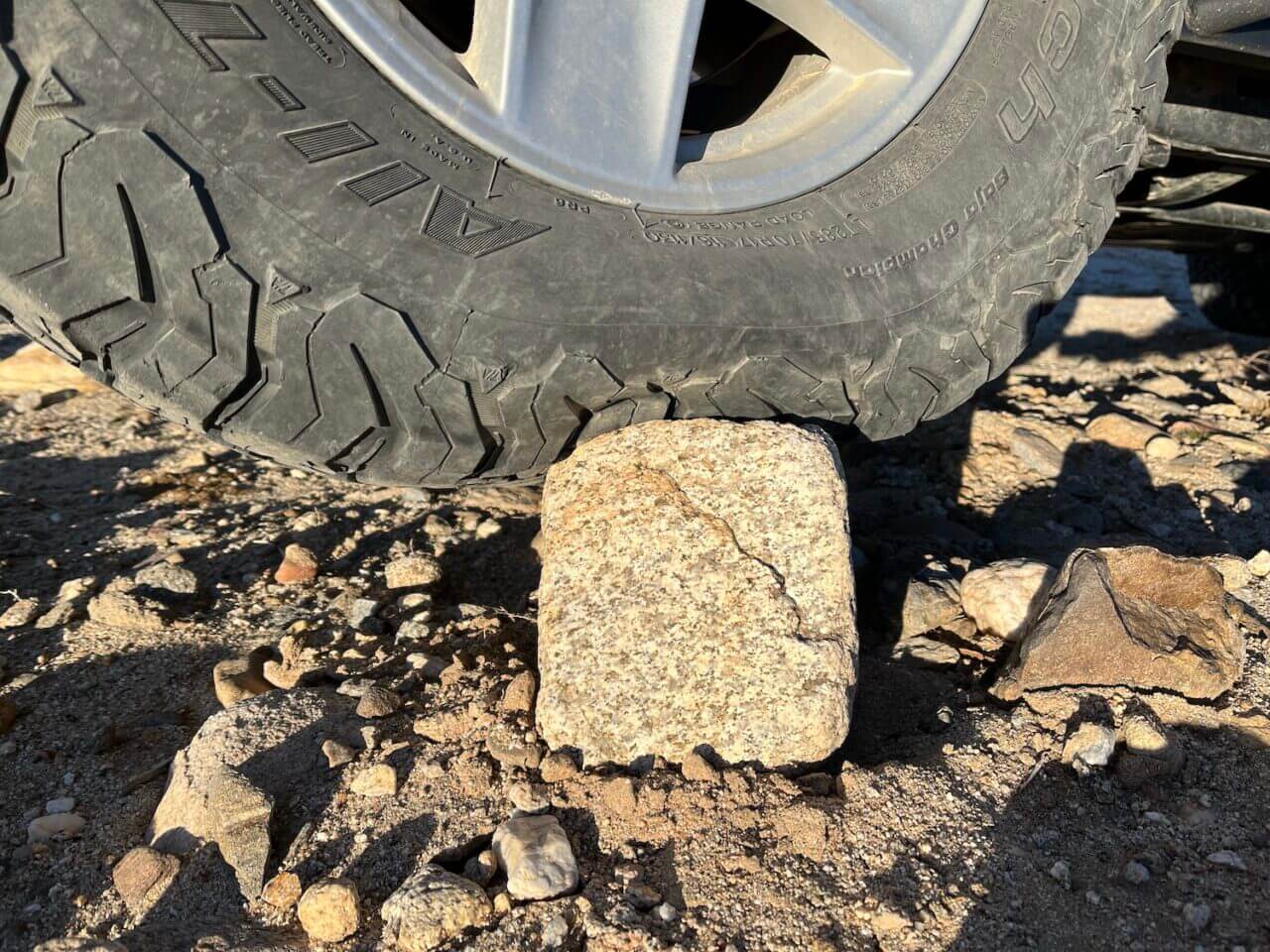
At 20 psi the tire carcass begins to envelop the rock and provide more traction. For our application, this is a good all-around off-road tire pressure for normal dirt, gravel roads and speedy desert two track littered with sharp rocks.
How Dirt Terrain Affects Required Tire Air Pressure
General off-road driving in dirt at reasonable speeds can be successfully done with radial tire pressures in the 10-20 psi range. Lower air pressure will allow the tire to tread to spread over the terrain and make more traction than a tire at full road pressures. You’ll also notice a significantly smoother ride. The soft malleable tires will absorb a lot of the small irregularities in the terrain that would normally be transferred to the vehicle suspension, axles and chassis.
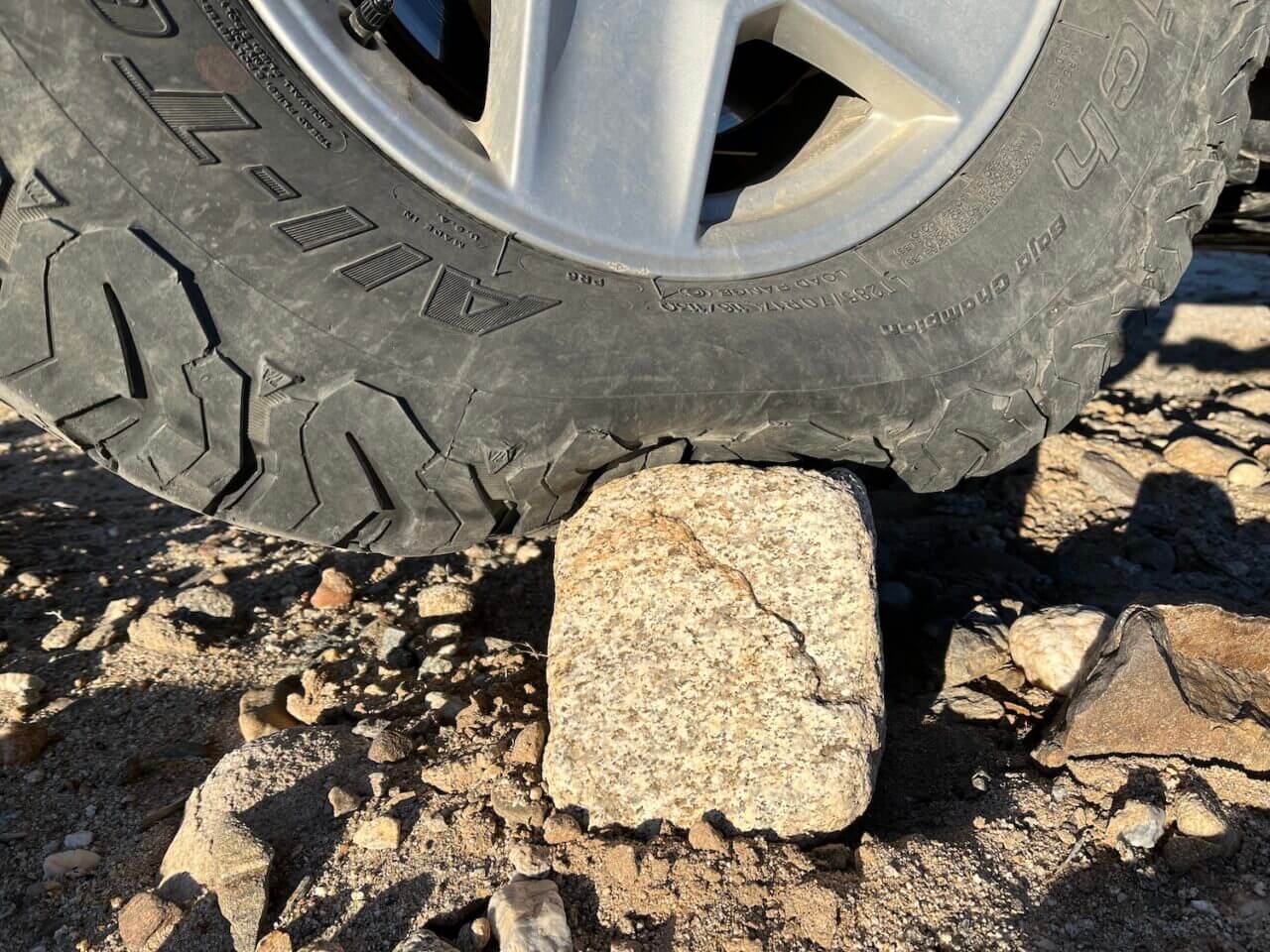
At 15 psi the tires on our 4×4 really flex and grip the rock underneath. Note the bulging sidewall and tread wrapped around the rock face. This would be a good tire pressure for controlled slow speed rock crawling where ultimate traction was needed.
How Rocky Terrain Affects Required Tire Air Pressure
Technical rock crawling at slow low-range transfer case speeds can be done with radial tires aired down to 10-20 psi in most cases. Lower air pressures will help the tire carcasses envelop the rocks to produce maximum traction. There is a limit though. If you go too low you risk damaging the wheels or tire sidewalls and really low tire pressures will significantly reduce your 4x4s ground clearance. Think moderation when it comes to tire air pressure in the rocks. Too little air in your tires can be just as bad as too much air.
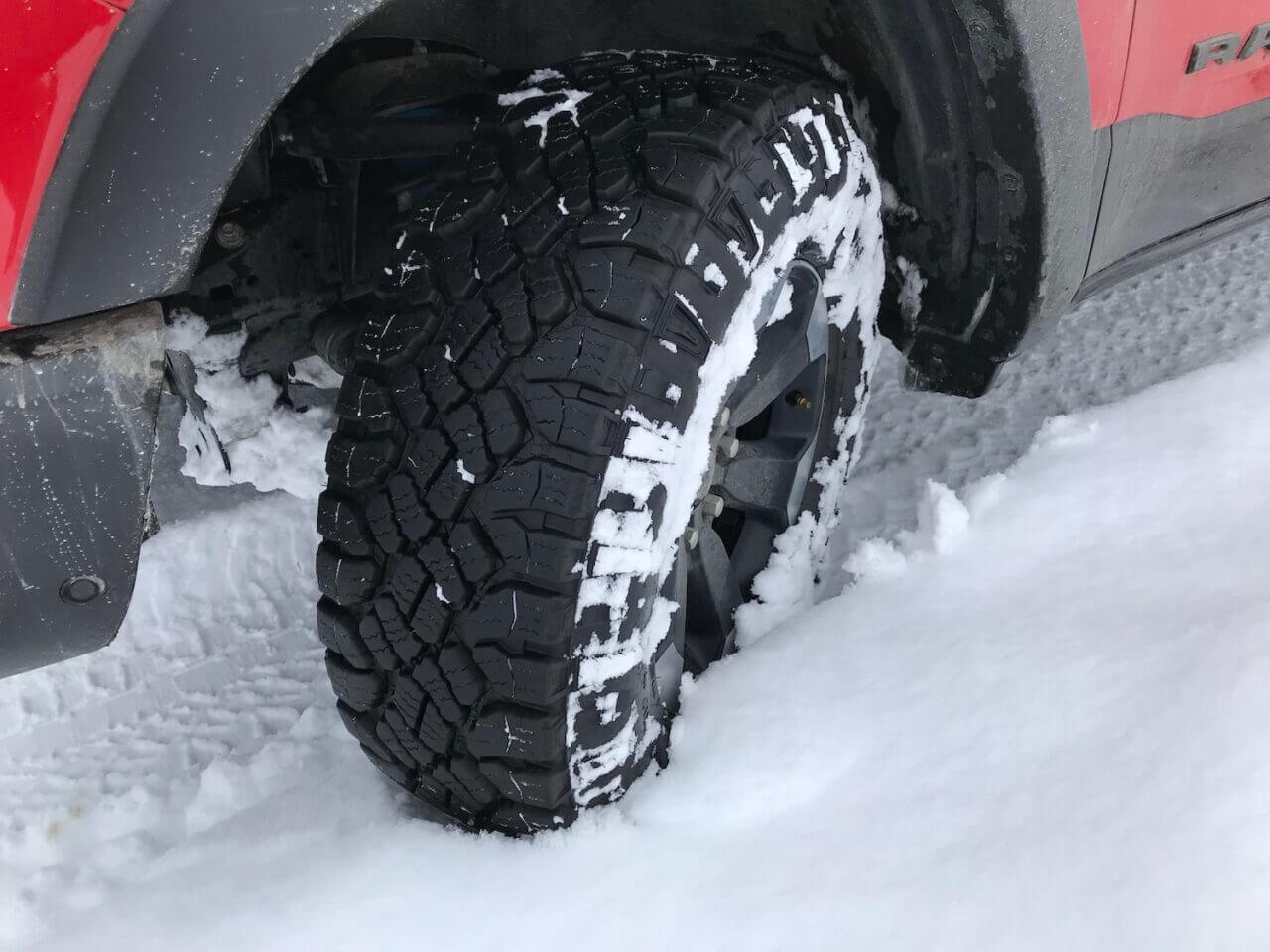
Airing down for mud and snow is important to help provide flotation in the deeper stuff. If there is a firm base under the mud or snow higher tire pressures can be utilized so that the tire tread can dig down and make traction.
How Mud And Snow Affects Required Tire Air Pressure
Selecting the correct tire pressure in snow and mud can be tricky. On the one hand you’ll generally want the extra floatation afforded by aired down tires, but just like in the rocks, airing down too far can reduce ground clearance and make the tire sidewalls vulnerable, in this case to branches, rocks or other debris hidden in the frost and muck. In a seemingly bottomless bog you’ll benefit by choosing lower tire pressures for maximum flotation. In mud and snow that has a firm base your spinning tires can reach you might opt for slightly more tire pressure. This will increase your 4x4s ground clearance through well-traveled ruts and let the tire tread reach down to where there might be more traction available. As with most other terrains, higher wheel speeds will also dictate higher tire pressures. The last place you want to pop off a tire bead is in the middle of a snow drift or mud bog. In most cases successful mud and snow runs can be made with radial tire pressures in the 10-20 psi range.
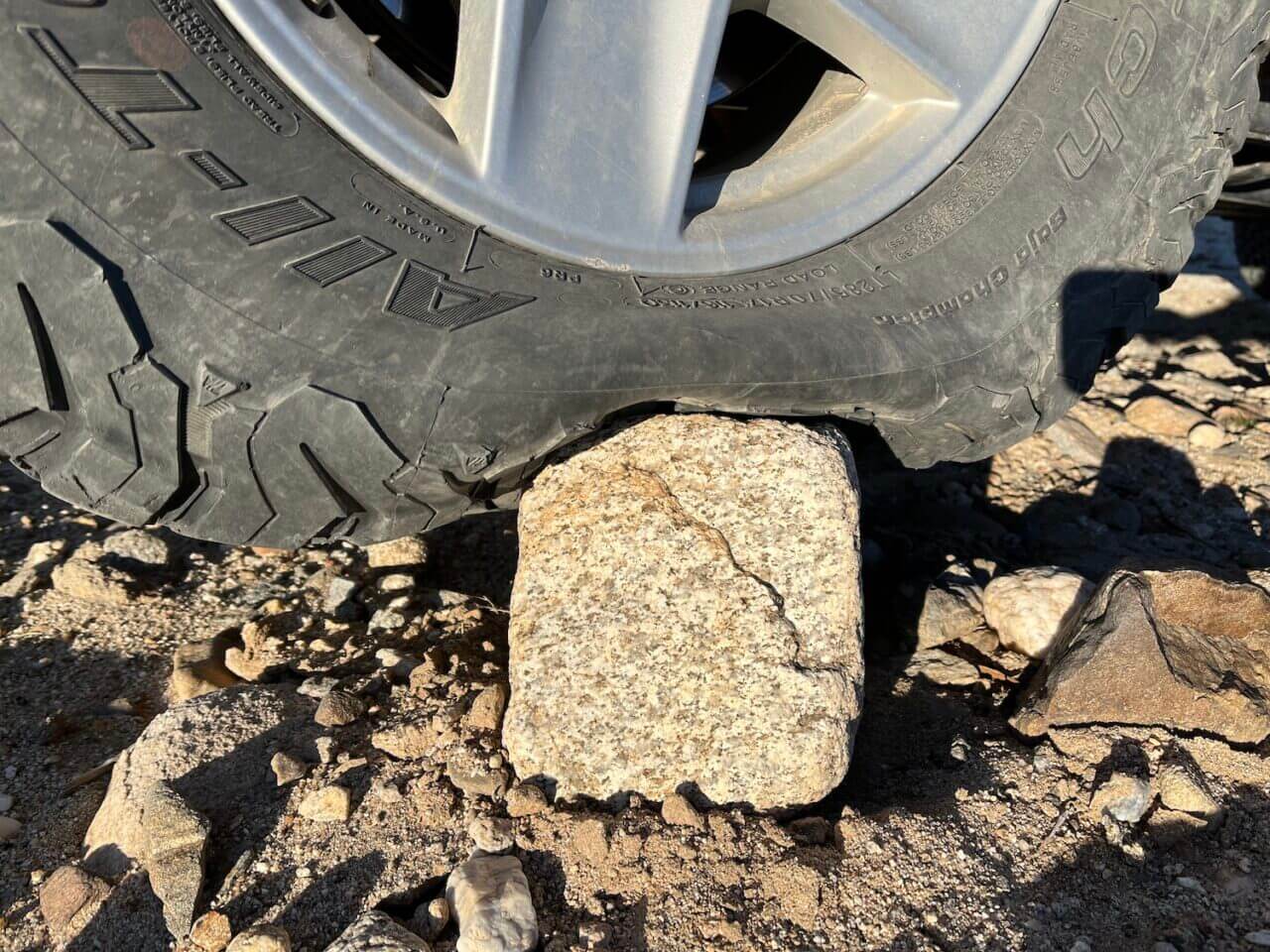
On our application 10 psi of tire pressure is dangerously low for all but very slow speed off-road driving in sand. At this pressure we would run the risk of popping a bead, damaging the tire sidewall or breaking a wheel with any kind of speed off-road.
How Sand Affects Required Tire Air Pressure
Sand is the one place where lower tire pressures are almost always better, that is unless you are an aggressive driver that likes to carve corners and rip the tire beads away from the wheels. The flotation in sand provided by radial tires at 10-15 psi will keep the vehicle from sinking. Aggressive drivers can opt for 15-20 psi tire pressures. Don’t forget that if you are towing a trailer through the sand you’ll want to air those tires down too. Fully inflated trailer tires on a heavy trailer will sink like a farm plow in the sand and cause a lot of drag, ultimately halting forward progress.
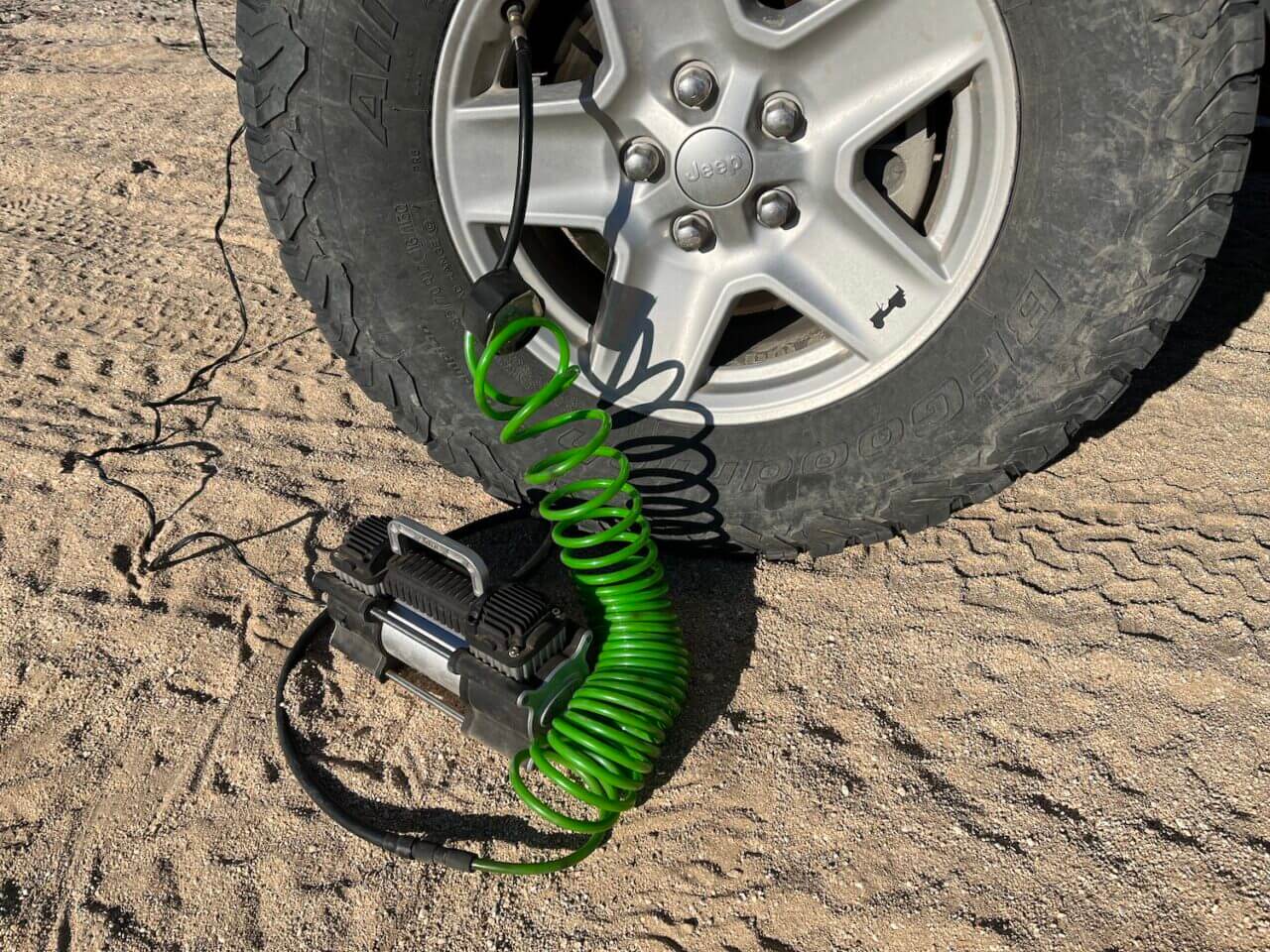
A 12-volt portable electric air compressor is a great addition to any 4×4 used on the trail. It can be used to air up your tires at the end of the day before you hit the road home. Look for a compressor that produces at least 1 CFM for faster tire air ups. Don’t forget to add a tire deflator to your 4×4 tool kit as well.















2